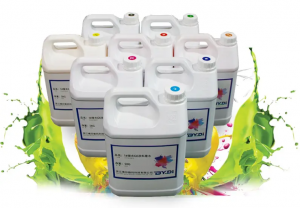Fabrics come in various materials, from natural to synthetic fibers, and each requires different methods of dyeing or printing. Whether it’s for fashion, home decor, or commercial use, it’s essential to know which solutions work best for each fabric type. In this article, we will explore the different solutions available for various kinds of fabrics, including disperse solution, pigment solution, acid solution, reactive solution, and DTG printing.
Disperse Solution for Synthetic Fabrics
Synthetic fabrics, such as polyester, nylon, and acrylic, are petroleum-based products and require specific dyes called disperse dyes. Disperse dyes are soluble in water but not easily dispersed, so they require high temperatures to dissolve and penetrate the fibers. Once dissolved, they bond with the synthetic fibers, creating a long-lasting, vibrant color.
Disperse dyeing is a common method used for polyester fabrics, as it is difficult to dye with traditional methods. It can also be used on nylon and acrylic fabrics, although the results may not be as bright.
Pigment Solution for Natural Fabrics
Natural fabrics, such as cotton, wool, and silk, are easily dyed using traditional methods. However, pigment solutions offer an alternative way to create unique and vibrant colors. Pigment solutions are insoluble in water and require a binding agent, such as a polymer, to stick to the fabric.
Pigment solutions can be applied using various methods, such as screen printing, block printing, and hand painting. They offer excellent coverage and can create a range of effects, from solid colors to gradient tones.
Acid Solution for Silk and Wool
Acid solutions are commonly used for silk and wool fabrics, as they require a different type of dye than natural fabrics like cotton. Acid dyes contain acidic groups, allowing them to bond with the protein fibers in silk and wool. The dyeing process involves adding the acid dye to the fabric, followed by an acidic solution like vinegar or citric acid, to create a low pH environment that helps the dye bond with the fibers.
Acid dyeing produces vibrant colors and is popular in the fashion industry for creating luxurious silk and wool fabrics. However, it is essential to follow safety precautions, such as wearing gloves and working in a well-ventilated area, as the acidic solution can be harmful if not handled correctly.
Reactive Solution for Cotton and Rayon
Cotton and rayon fabrics require a different type of dye than silk and wool, called reactive dyes. Reactive dyes contain a reactive group that can bond with the cellulose fibers in cotton and rayon. The dyeing process involves soaking the fabric in a solution of reactive dye and an alkali, such as soda ash, to create a high pH environment that allows the dye to bond with the fibers.
Reactive dyeing produces bright and vivid colors and is widely used in the textile industry for printing on cotton and rayon fabrics. However, it requires careful handling and attention to detail to ensure the colors are consistent and long-lasting.
DTG Printing for Textile Printing
DTG (Direct-to-Garment) printing is a digital printing method that uses specialized printers to print directly onto fabric. DTG printers use water-based inks that are compatible with various fabrics, including cotton, polyester, and blends. The printer sprays the ink onto the fabric, creating a high-quality print with intricate details and colors.
DTG printing is popular in the textile industry for producing custom designs on a small scale, such as for personalized t-shirts or small batches of clothing. It is a fast and efficient printing method that eliminates the need for screens or stencils, making it cost-effective and flexible.
In Conclusion
In conclusion, there are various solutions available for dyeing or printing fabrics, each with its advantages and disadvantages
Media Contact
Company Name: Zhejiang Boyin Digital Technology Co., Ltd.
Email: Send Email
Phone: 0086-18368802602
Country: China
Website: https://www.boyindtg.com/

